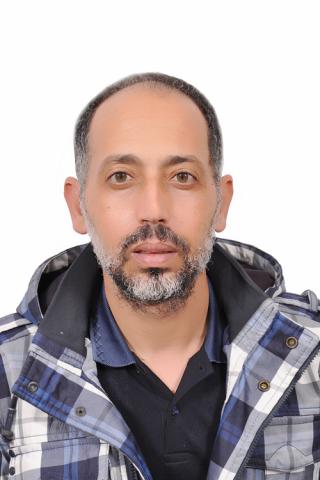Interview with longlisted author Mohsine Loukili
14/03/2022

When did you begin writing The Prisoner of the Portuguese and where did the inspiration for it come from?
I began writing The Prisoner of the Portuguese in mid-January 2020. Incidentally, the month of January is when I usually begin new literary projects. The first lines were written at the start of 2020, but the idea for the novel came to me a year earlier. It was brewing inside me whilst I wrote another novel. It kept prodding at me until finally it burst out in an exuberant stream of words, creating its own special world.
Where did the inspiration come from? Yes, just as the big things in our lives come by chance, so did the idea for The Prisoner of the Portuguese. I made a visit to the Moroccan city of Essaouira, one of the impregnable fortresses of the Portuguese on the Atlantic coast many centuries ago. I was impressed by its walls, which still preserve a sense of the greatness of the Portuguese when they were masters of the world. In one of its exquisite squares, overlooking the sea, I stood watching a storyteller playing on his ney [traditional flute]. He was a skilful player and beside him sat his thin monkey. In this image of the Bedouin, I saw the past living before me. I left the city a few days later, but the face of the storyteller did not leave me. It pursued me until the man became, through the magic of words, the hero of a novel competing for the International Prize for Arabic Fiction.
Did the novel take long to write and where were you when you completed it?
It took nearly a year of intensive, daily writing. The characters never left me. Hour by hour, they were with me, with their friendships and conflicts. Often, they woke me from my sleep to write. They were passionate for life, just as I was passionate about writing. When I wrote the final chapters, I was in Agadir, on the edge of the Atlantic Ocean, on a piece of land where there was once another fortress belonging to the Portuguese. “Santa Cruz”, which rises up between the waters of the sea and the Atlas Mountains, was my favourite spot for writing. From the windows of its houses, Sophie, the lover of Pedro the prisoner, would watch the ships of the Portuguese. There, The Prisoner of the Portuguese was completed, with the return of Al-Naji to the arms of his beloved Ghita.
How have readers and critics received it?
Since its publication, The Prisoner of the Portuguese has attracted the attention of many literary critics in different Arab countries. It has been written about on respected platforms by the Lebanese Al-Akhbar newspaper. I was pleased with the interest of the critics. Now that the novel is at the heart of competition for a superior prize with the importance and international prestige of the International Prize for Arabic Fiction, it will gain the attention it deserves.
What is your next literary project after this novel?
That’s a great question.
About a month ago, I finished a new novel called Neighbourhood of the Single Women. Yes, I write intensely and passionately. Writing is the air which I breathe. Neighbourhood of the Single Women is a different world. I crafted it at my leisure, slowly, building it hut by hut, alley by alley. In those alleys was another life, lived by women despised and degraded by the majority, and children who are called “children of Satan” since they don’t have fathers. They live on the edges of Casablanca, right next to a rubbish dump which feeds the unmarried mothers and guarantees life for their children.
My next literary project, which started last January, my usual time for beginnings of new projects, is a free narrative adventure on moving sand. It’s full of stories forgotten by the world, about cities no longer recollected by history, characters leaving oblivion and coming alive, with all their suppressed cares and dreams, and their hoarse voices. It is the story of Aisha who rode her horse and followed the caravan coming from Timbuktu. She had sworn to her husband that she would not return without her kidnapped son. The events take place between Timbuktu and Fes, from the sands of the Sahara to the Atlas Mountains. We follow the story of a rebellious woman who challenged her oppressors in order to triumph over them.
